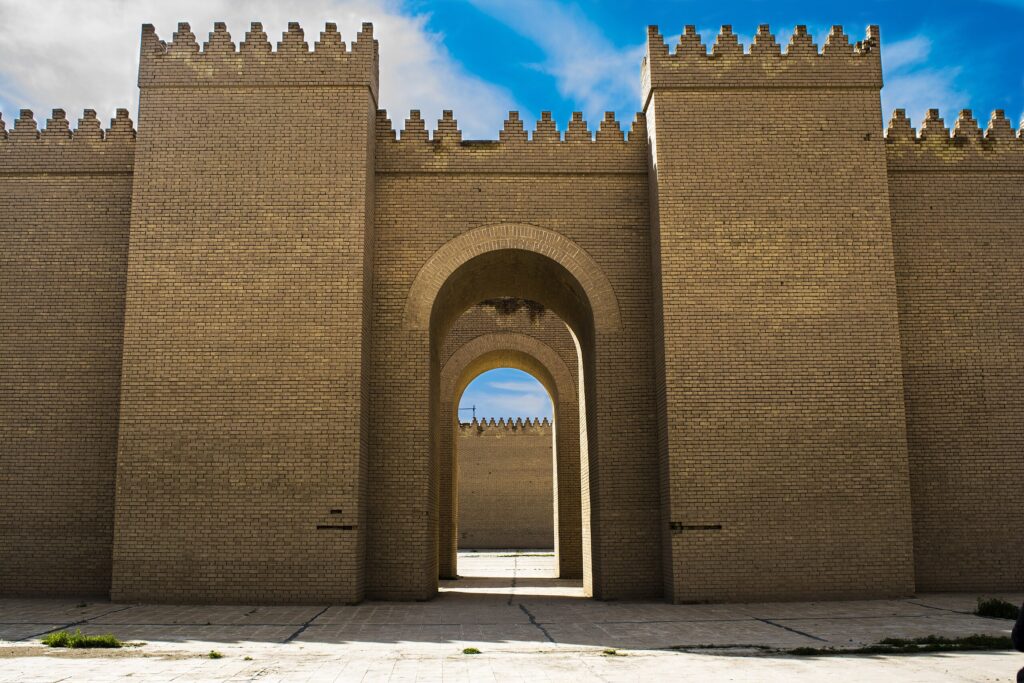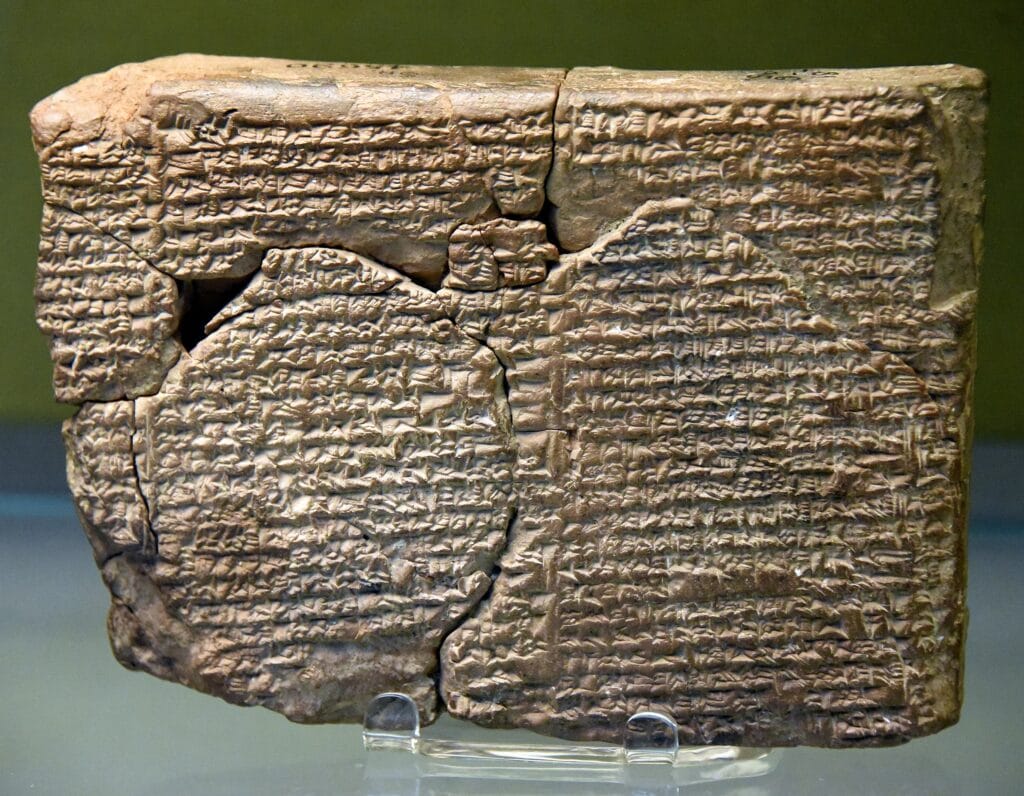Ancient City of Babylon
Babylon was an ancient city located by the Euphrates River in what is now Iraq. It is known for its impressive history and significance in the ancient world. Babylon was not only a center of culture and religion but also famous for its incredible buildings, such as the Hanging Gardens of Babylon, which is recognized as one of the Seven Miracles of the Ancient World. This remarkable history helps us feel a connection to people from the past.
Table of Contents
Where is the location of the Babylon?
Babylon was an ancient city that located in a region called Mesopotamia, which is now part of modern Iraq. It was located close to the Euphrates River, about 85 kilometers south of Baghdad. This city was once the capital of the Neo-Babylonian Empire between 626 BC and another significant time. Babylon is famous for its important role in ancient culture, government, and impressive architecture. One of its most well-known features is the Hanging Gardens, which are considered one of the Seven Wonders of the Ancient World.
Inscription of Babylon
In 2019, the ancient city of Babylon was added to the UNESCO Heritage List, highlighting its incredible importance as a representation of the achievements of the ancient Mesopotamian civilization. With its rich history, stunning buildings, and cultural significance, Babylon is key to understanding how human society has developed over time. This recognition aims to protect and preserve Babylon for future generations, underscoring its role as a vital piece of global cultural heritage.
What is the meaning of Babylon?
The term “Babylon” can have different meanings, but it’s commonly linked to the ancient city that was very important in history. The name “Babylon” is believed to derive from the Akkadian language “Babilu,” meaning “Gate of the Gods.” That highlights its significance as a place of worship and its cultural importance in the ancient world.
What is the history of Babylon?

Babylon, founded around 3000 BCE, was a major city that was home to powerful empires throughout history. It was ruled by notable leaders like Hammurabi, known for his famous code of laws, and Nebuchadnezzar, who is remembered for his grand building projects. Babylon represents a high point in the history of the Neo-Babylonian Empire, showcasing its incredible achievements and creativity.
Babylon was one of the earliest and biggest cities in ancient Mesopotamia and the Middle East. It was led by notable rulers, such as Hammurabi and Nebuchadnezzar, who had a big impact on the region. Babylon was known for its politics, advances in technology, and impressive art. It also made important contributions to fields like mathematics and astronomy, leaving behind a valuable legacy that influenced many cultures.
Why is it called Hanging Gardens?
The term “Hanging Gardens” describes a famous group of tiered gardens that are believed to have been built in ancient Babylon, near what is now Hillah, Babil in Iraq. The name comes from the design of the gardens, where plants and trees seem to “hang” over the terraces. This design aimed to create a beautiful display of greenery and flowers and to mimic the lush gardens of the area. The Hanging Gardens are recognized as one of the Seven Wonders of the Ancient World, but their exact existence and location are still debated by historians and archaeologists.
Architecture of Babylon

During the time of the Neo-Babylonian Empire, from 626 to 539 BCE, this city was a shining example of culture and creativity. Its unique layout was designed in an impressive way, featuring grand buildings for worship, government, and defense. The city also had beautiful decorations that highlighted the power and authority of its rulers. The area includes a variety of urban features, such as buildings, city walls, gates, palaces, and temples.
Classical writings often mention two famous miracles of the prehistoric world: the Hanging Gardens of Babylon and the Tower of Babel. While both are widely recognized, they were actually inspired by real buildings from history that we can still find traces of today. These include a large stepped structure called a ziggurat, known as Etemenanki, and a grand palace built by the king Nebuchadnezzar.
Both of these extraordinary buildings come from ancient times, and we can still see signs of their existence today through archaeological discoveries. All these components reflect the rich culture of the neo-Babylonian civilization, particularly in terms of its impressive architecture and city design.
Culture and Civilization of Babylon

During the height of the Neo-Babylonian Empire, from 626 to 539 BCE, this city stands out as a fantastic example of their vibrant culture. It highlights the creativity and innovation of the people during a highly productive architectural and improving their urban environments. The cultural achievements of the Akkadians and Sumerians played a significant role in shaping Babylon’s rich cultural heritage. One of their key contributions was the development of cuneiform writing, a system that became crucial for recording and understanding the history of the area, including Babylon itself. This writing method helped preserve important information and stories from the past.
Babylon is a significant city that appears in the holy texts and traditions of the three major Abrahamic religions: Judaism, Christianity, and Islam. The tales of Babel can be found in the sacred books of the three main Abrahamic religions—Judaism, Christianity, and Islam. Throughout history, it has sparked the imagination of many literary, philosophical, and artistic figures, inspiring a wide range of creative works. In ancient Greek writings, Babylon was described as a faraway place that seemed incredible and almost too amazing to be true.
The area surrounding the historic city of Babylon is made up of small villages and farmland. The impressive remains of ancient buildings, such as the outer and inner city fortifications, entrances, royal residences, and religious buildings, showcase the greatness of one of history’s most important empires. These structures tell a powerful story of the civilization that once thrived there. For more than two thousand years, Babylon has been a symbol of power and influence. It has shaped art, society, and religion around the world, serving as an example and a metaphor for ancient authority.
Archaeological Site of Babylon
Babylon is an ancient archaeological site that showcases the history of one of the most powerful empires from long ago. Its rich culture and important symbols make it a unique and significant place that has influenced many people throughout history. For over two thousand years, this location has been a symbol of a fascinating and intricate story. Much of it is still buried beneath the surface, and exploring these areas is important for preserving its unique importance to the world and for future research.
What Babylonians invented? Which are the most Babylonians notable inventions?

The Babylonians were an ancient civilization that made many important contributions to the world, especially in areas like mathematics, astronomy, and engineering. Some of their key achievements included developing a writing system called Cuneiform, creating a unique number system based on 60, and advancing our understanding of Astronomy.
They also established a calendar based on the moon’s phases(Lunar Calendar), wrote one of the earliest legal codes, the Code of Hammurabi, and built impressive structures called Ziggurats. These developments played a critical role in shaping future cultures and have continued to influence societies throughout history.
What is Babylon famous for?
Babylon is famous for its important role in ancient history, especially as a hub of culture, knowledge, and laws. One of its most well-known features is the Hanging Gardens, recognized as one of the Seven Wonders of the Ancient World. Babylon is also recognized for the Code of Hammurabi, one of the initial sets of written laws that helped shape justice. The city greatly contributed to the fields of math and astronomy in ancient Mesopotamia. Plus, its amazing buildings, like the ziggurat called the Tower of Babel, have helped secure its place in history.
Why do we need to preserve Babylon significantly for us and future generations?

Preserving Babylon is important for us and future generations because it connects us to our past. It shows the advancements in architecture, governance, and culture of one of the world’s primary civilizations. Babylon provides valuable insights into human history, helping us understand how societies evolve and develop. Moreover, keeping this ancient site intact promotes cultural heritage, boosts tourism, and encourages future generations to appreciate and learn from the successes and failures of our ancestors. Protecting Babylon highlights the need to preserve historical sites worldwide, reminding us to honor the variety of human experiences.
Why should you visit Babylon as a visitor?

Visiting Babylon offers a unique glimpse into ancient history and culture. As one of the most famous cities of the ancient world, it showcases incredible archaeological sites, like the Ishtar Gate and the ruins of the Hanging Gardens, which evoke a sense of wonder and exploration. The city is rich in artifacts that provide insights into early civilization, art, and architecture. Plus, the vibrant atmosphere and the stories behind its legendary status make it a fascinating destination for anyone interested in history and heritage.
How can visiting Babylon enhance your understanding of early Mesopotamian history?
Don’t miss the chance to explore one of the most iconic cities of the ancient world! Embark on a journey to Babylon and immerse yourself in its rich history and breathtaking architecture. Whether you’re wandering through ancient ruins or discovering local culture, Babylon promises an unforgettable adventure. Plan your trip today and become part of its storied legacy!
When you’re planning your adventure, enhance your travel experience by using trusted websites like GetYourGuide and Trip.com! These platforms offer a variety of enjoyable tours, activities, and accommodation options to suit every traveler’s needs.
- GetYourGuide offers a wide variety of unforgettable travel experiences. You can choose from tickets to Popular Attractions, Transportation Options, City Passes, Guided Tours, Hop-on Hop-off Bus Services, Water Activities, Day trips, and Trips that last several days in many locations around the world.
- Trip.com makes it easy to combine Flights and Hotels, Trains, Car Rentals, Airport Transfers and Attractions & Tours to create the perfect travel package tailored just for you.
Start your journey with our reliable travel partners and unlock the best of Babylon and beyond!
Disclaimer
In this post, affiliate links are included and those links are associated with well-known travel companies such as GetYourGuide and Trip.com. If you choose to purchase or book a service using those links, we may earn a commission at no additional cost to you. We focus on recommending products and services that are helpful to you and we appreciate your support!
Conclusion
We hope you find this information helpful for your next trip. If you want to learn more, check out our other travel blog posts. We cover many topics, including amazing places to visit and helpful travel tips. Whether you’re looking for hidden gems, new cultures, or helpful advice, there’s something for everyone.
Additionally, If you enjoyed the information we shared, don’t forget to explore our other travel product reviews to make your journey even better! Please take a moment to look through our previous posts and let your sense of adventure guide you on your next journey! We wish you happy travels and look forward to sharing more with you in our next blog post!




